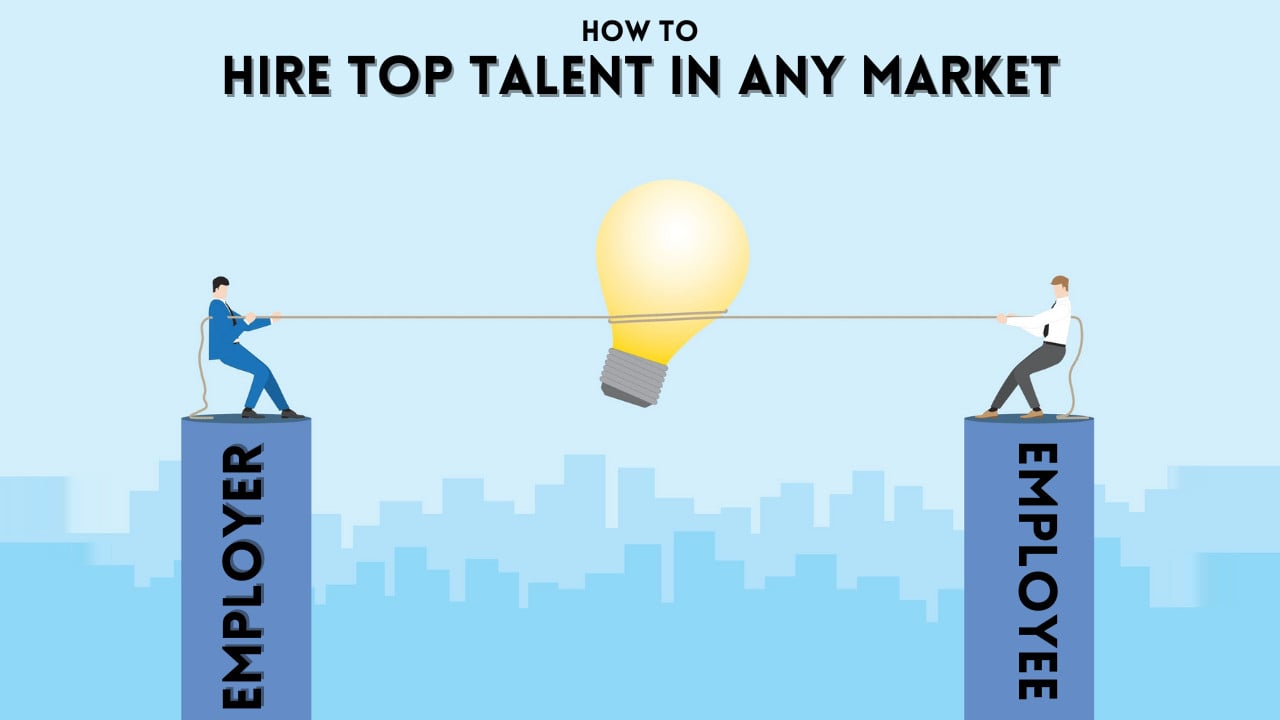In today’s competitive job market, it’s crucial for both employers and job seekers to understand how to navigate the dynamics of an employer’s job market vs. an employee’s job market. While the employee’s job market focuses on the availability of job opportunities and the power of choice for job seekers, the employer’s job market emphasizes the demand for skilled candidates and the competition among employers to attract and retain top talent.
But what are the noticeable differences between these two markets, and how can you position yourself to secure the best talent, regardless of which market you find yourself in?
The Employer’s Job Market
In the employer’s job market, companies have an upper hand, often facing an overwhelming number of applicants, but a scarcity of qualified candidates. Here are some indicators that you may be in an employer’s job market:
- Fewer job postings and higher number of applicants – The reduced number of opportunities leads to greater competition among candidates. This gives employers greater negotiating power and the ability to attract talent from competitors undergoing layoffs or reorganizations.
- Selective hiring practices – Employers can be highly selective about who they consider and have the ability to take their time in the interview process. For candidates, this is often the hardest time to make a career pivot to a new industry.
To position your organization effectively in the employer’s job market and win top talent for your organization, consider the following strategies:
- Highlight Recent Achievements, Acquisitions and Accolades – Top candidates want to work for top companies. This doesn’t necessarily mean you need to be on the Fortune 500 list to secure great talent, but instead means that you should be leveraging your brand credibility, market expertise and/or leadership team to attract and hire effectively.
- Leverage Professional Networks – Companies and hiring managers should use this time to tap into professional and personal networks to find the best talent. With a surplus of candidates on the market, now is the time to utilize platforms like LinkedIn and industry specific recruiters to connect with off-market talent in your industry.
- Don’t Fool Yourself – Even when the market shifts to favor the employer – you must still remain competitive to attract and retain talent or you will lose to your competition. Remote, Hybrid and Flexible Work Schedules are still the top considerations for candidates considering making a move.
The Employee Job Market
In the employee’s job market, there are fewer candidates on the market to fill the open roles, giving job seekers the upper hand. Typical indicators of an employee-driven job market include:
- More job postings with less applicants – This means candidates are at an advantage as they have a larger pool of job opportunities to choose from and also gives them greater negotiating power around incentives and compensation packages.
- Skill Demand and Shortage – Companies know they are at a disadvantage and will do more to retain existing talent instead of starting from scratch to rehire a position. This means employers should expect that candidates will receive a counter offer to stay at their company and may have to renegotiate on offer details.
To make the most of your hiring strategy during an employee’s market, consider deploying the following strategies:
- Branding your Company Culture – Employees want to know that they are working for a company that retains their employees, provides great benefits and offers them an opportunity to advance their career. If you’re able to offer remote, hybrid or flexible work schedules, even better. Leverage all of these areas in your job postings and careers page to ensure candidates are getting the right message about your company.
- Keep your interview process dynamic and speedy – In this market, you should always assume you are competing with several other companies for top talent and need to move quickly. The interview process should not take more than 2 weeks and candidates should be given prompt follow-up and guidance as to what the remainder of the process looks like.
- Find out who your competitors are hiring from – As employers compete for the same talent in their industry, candidates can leverage offers resulting in overextended compensation packages. In this market, you may not be able to outbid your competition, which means you need to be more open minded with where you find talent. Find out where the top reps at your company or your competitor’s started and go after those candidates who are looking to break into the market.
As an important final note, job market conditions can vary based on location, industry, and economic factors. It’s essential to continuously monitor and adapt your hiring strategies based on the specific conditions and indicators relevant to your team.
Regardless of the market, many hiring companies rely on agencies to find qualified candidates, especially for higher-level or confidential positions so opting to partner with a sales-focused recruiting agency can be a strategic move in building a world-class sales organization. If you’re looking for best-in-class talent, or just need advice on creating a winning recruitment strategy for your organization, look no further than Treeline, Inc. Contact us today to schedule a free consultation.
Share This Story, Choose Your Platform!
What our happy clients are saying
Contact Us for a Free Consultation
Tell us more about your business and how we can help.












